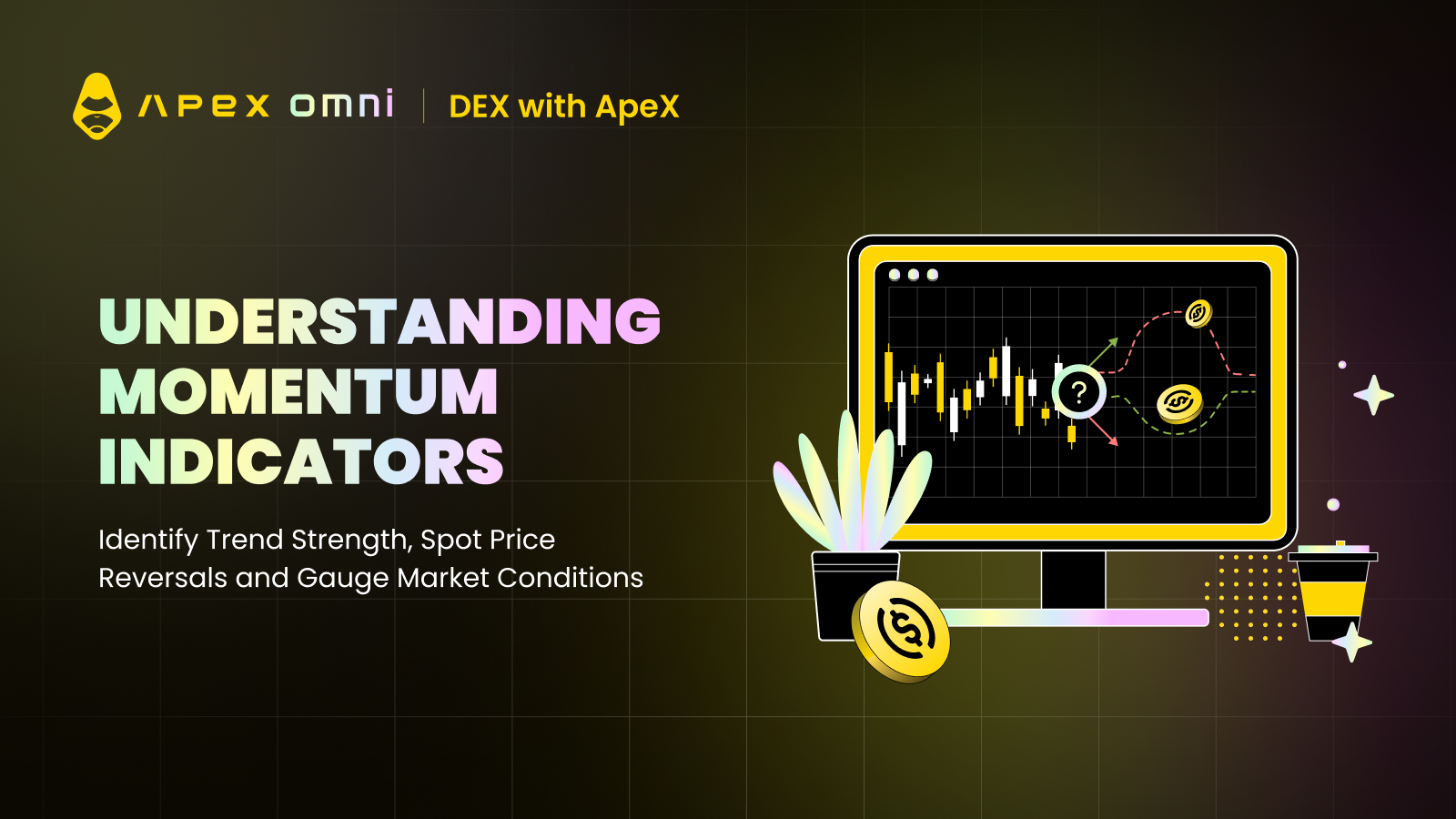In crypto trading, there are 4 key indicators that are most commonly employed to understand market behavior: trend, momentum, volatility, and volume. Among these, momentum indicators look to the rate of change in crypto asset prices, utilizing technical indicators to measure the speed and strength of price movements. This form of analysis is based on the premise that assets moving strongly in a particular direction are likely to continue on trend.
Momentum analysis serves multiple crucial functions. It helps traders identify trend strength, detect potential price reversals, and gauge overbought or oversold conditions. Key to this approach is measuring price changes over specific periods, often visualized through oscillators.
By combining momentum indicators with other indicators and tools, traders can gain a comprehensive overview of market conditions. This multifaceted analysis is particularly valuable in navigating the fast-paced world of crypto trading.
Differentiating between Momentum Indicators and Oscillators
Let's dive into the differences between momentum indicators and oscillators and how they're used to predict trades. Momentum indicators are tied to price movements, measuring the speed or strength of trends. Unbound by specific ranges, they excel at identifying trends and potential reversals.
Conversely, oscillators typically operate within a fixed range, often between 0 and 100. They're particularly adept at identifying overbought and oversold conditions. By moving around a center line or between set bounds, oscillators prove especially valuable in sideways or ranging markets.
Applicability of Indicators and Oscillators to Crypto Trading
Momentum indicators and oscillators are widely used in cryptocurrency trading to identify key market conditions. They are particularly helpful in spotting overbought or oversold situations, which are frequent in speculative markets.
In trend analysis, these tools help traders confirm the strength of ongoing trends and spot potential reversals, which is crucial given the fast-paced nature of crypto markets. For entry and exit strategies, momentum indicators are invaluable in determining optimal points for trades, where timing is critical. They're also useful for price movement analysis, helping traders assess the velocity of price changes.
Momentum tools often serve as complementary analysis alongside other technical indicators, providing a more comprehensive view of market conditions. They assist in market state evaluation, helping traders differentiate between trending and ranging markets. Some indicators, like the On-Balance Volume (OBV), are used for volume analysis to predict price changes based on trading volume, which can be particularly revealing in crypto markets where large volume movements can signal significant price action.
The versatility of these tools makes them applicable across various conditions in the market, from short-term scalping to longer-term position trading.
Examples of Most Popular Momentum Indicators and Oscillators
Several momentum indicators and oscillators have risen to prominence due to their efficacy in capturing trends in the crypto market. Each indicator brings its own strengths to the table, offering traders diverse ways to analyze momentum and make informed decisions. From measuring the speed of price changes to identifying potential trend reversals, these indicators provide valuable insights into market sentiment and potential future price movements.
Let's explore some of the most widely used momentum indicators and oscillators in cryptocurrency trading, understanding their mechanics and how they can be applied to digital asset analysis.
Relative Strength Index (RSI): The RSI measures the relative speed over a specific period and change of price movements. It operates on a scale from 0 to 100. Readings above 70 typically indicate overbought conditions, while readings below 30 suggest oversold conditions.
Moving Average Convergence Divergence (MACD): The MACD is a trend-following momentum indicator. It shows the relationship between two moving averages.
Stochastic Oscillator: This oscillator compares a token's closing price to its price range over a specific period. Like the RSI, it uses a scale from 0 to 100 and helps identify overbought and oversold levels in markets.
Rate of Change (ROC): The ROC measures the percentage change between the current price and the price a certain number of periods ago. It provides a direct measure of momentum in price movements.
On-Balance Volume (OBV): OBV uses volume flow to predict changes in prices. Rising volume may indicate trend continuation, while declining volume might suggest an upcoming reversal.
Average Directional Index (ADI): While primarily a trend strength indicator, the ADI includes components that function as momentum indicators. It measures the strength of upward or downward trends in cryptocurrency markets.
Commodity Channel Index (CCI): The CCI is another popular momentum indicator. Originally developed for commodities, it's now used to help identify cyclical trends in prices.
In the fast-paced world of cryptocurrency trading, momentum indicators and oscillators could be indispensable tools for technical analysis. These instruments provide crucial insights into the strength, speed, and potential reversals of price movements and when applied, momentum tools can significantly enhance trading strategies and decision-making processes.
Stay tuned for upcoming articles on ApeX Blog , where we'll delve deeper into specific technical indicators. As always, remember to conduct thorough research before trading, practice careful risk management, and never invest more than you can afford to lose. Happy trading!

